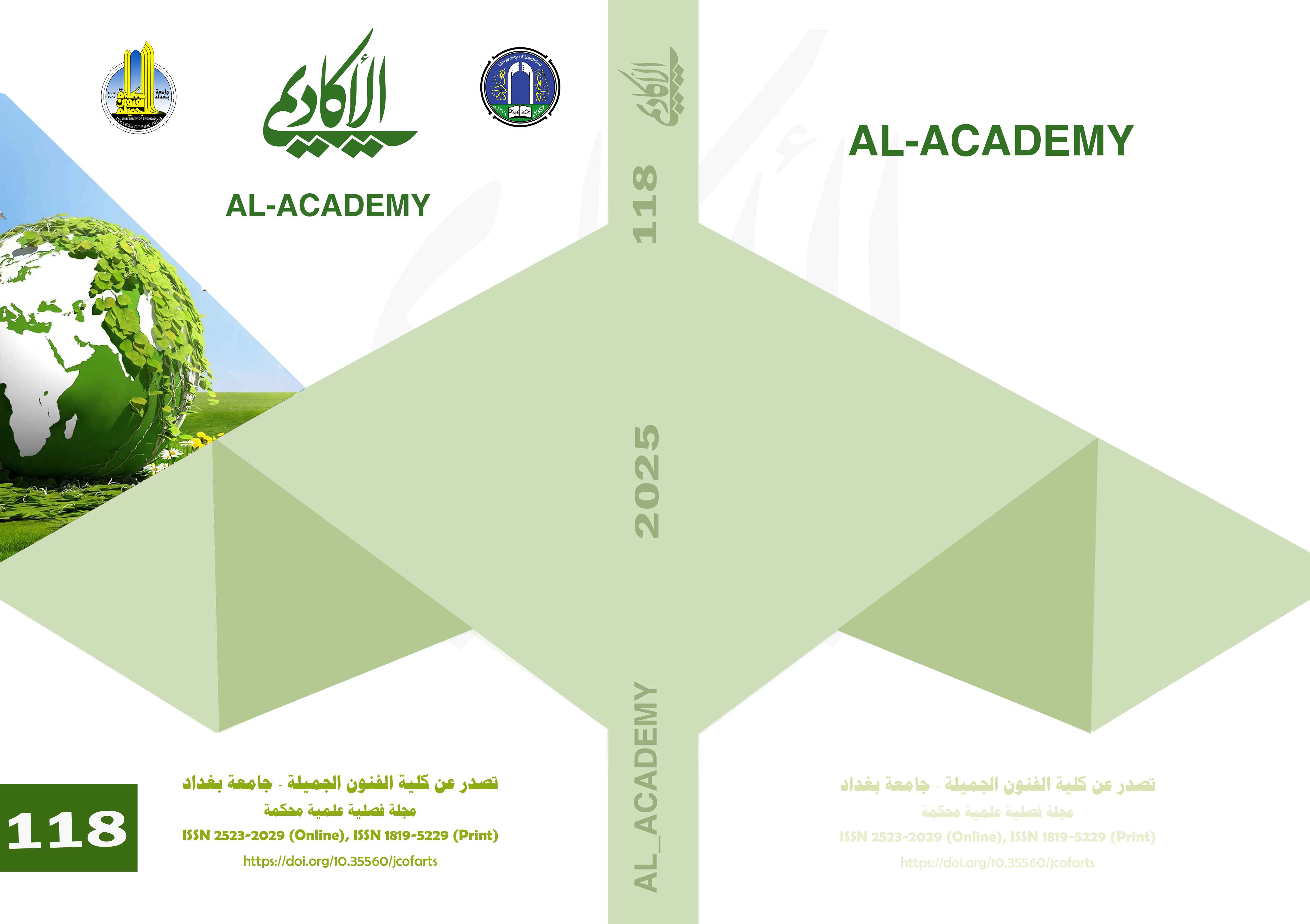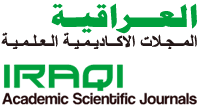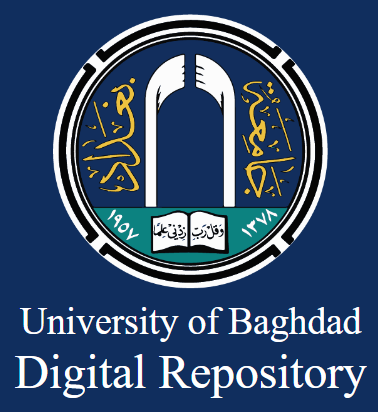The role of art education teacher in developing students’ aesthetic taste
DOI:
https://doi.org/10.35560/jcofarts1628Keywords:
Role, Art Education Teacher, Development, Aesthetic Taste, Intermediate Education StageAbstract
The field of art education is considered one of the most significant domains that contribute to the development of students’ aesthetic taste. It represents a foundational pillar in enhancing both their intellectual and artistic capacities. The role of the art education teacher goes beyond teaching technical and artistic skills to include fostering students’ ability to appreciate beauty across various forms of art.
This study is structured into three chapters. Chapter One addresses the research problem, which centers on the question: Does the art education teacher play a role in developing students’ aesthetic taste? The importance of the study lies in highlighting the role of art education in cultivating students’ aesthetic sensibilities and enhancing classroom engagement through innovative teaching methods and techniques. The study also aims to provide a scientific contribution to the field of art education in middle schools and to support educational institutions in improving artistic teaching practices. Therefore, the study aimed to explore the role of the art education teacher in developing aesthetic taste among students. The scope of the study was limited to the intermediate (middle) school stage—specifically grades one, two, and three—as this stage is critical in shaping the student’s personality after transitioning from the primary level.
Chapter Two presents the theoretical framework and a review of previous studies. The theoretical framework consists of two main sections: the first addresses the definition, concept, and importance of aesthetic taste; the second discusses the importance of activating the role of the art education teacher in developing students’ aesthetic appreciation.
Chapter Three includes the research procedures, such as the study population and sample. The research adopted the descriptive-analytical method, as it is the most appropriate for the nature of the study. This chapter also outlines the design of the research instruments and the statistical tools employed, based on a thorough review of relevant literature and sources.
Considering the study’s findings, the researcher recommends the necessity of encouraging art education teachers to emphasize the importance of art and its role in enhancing students’ aesthetic sensibilities. It is also recommended that school activity directorates coordinate with schools to provide specialized professional development workshops for art teachers focused on fostering aesthetic appreciation. Furthermore, the researcher suggests conducting similar studies in this field to build on the current findings.
References
Ibn Manzur, Muhammad ibn Mukarram. (1994). Lisan al-Arab (Vol. 4). Beirut: Dar Sadir.
Ibn Manzur, Muhammad ibn Mukarram. (2003). Lisan al-Arab (A. A. Al-Kabir, Ed.). Beirut: Dar Sadir.
Ahmed, Zakaria. (2017). Art in Education. Dar Al-Thaqafa.
Ahmed Shafiq Zaher, et al. (n.d.). Hadith al-Funun. Al-Itiamad Press.
Al-Badawi, Abdul Rahman. (1986). Dictionary of Social Sciences Terms. Beirut: Maktabat Lubnan.
United Nations Development Programme. (1990). Human Development Report.
Al-Jawadi, Muhammad. (2002). Social Encyclopedia. Cairo: Dar Al-Fikr Al-Arabi.
Al-Khamasi, Abdul Rahman. (2012). Concepts in Social Development. Amman: Dar Safaa for Publishing and Distribution.
Al-Zubaidi, Muhammad Murtada. (1984). Taj Al- Arus Min Jawahir Al-Qamus (A. A. Faraj, Ed.). Kuwait: Ministry of Guidance and Information.
Al-Rifai, Abdul Basit Muhammad. (2010). General Sociology. Amman: Dar Al-Maseera for Publishing and Distribution.
Al-Shanawi, Hasan Abdul Hamid. (2003). Psychology of Artistic Taste. Cairo: Dar Al-Fikr Al-Arabi.
Al-Taie, F. (2018). The effect of practical lessons in art education on developing aesthetic sense among students. Art Studies Journal.
Al-Ali, S. (2020). The effect of an educational program in art education on developing aesthetic taste among middle school students. Art Education Journal.
Al-Arfi, Fatima Al-Zahraa. (2019). Aesthetic taste among adolescents. Journal of Educational Studies.
Anis, Abdullah Ahmed. (2011). Scientific Research Methodology in Education and Psychology. Cairo: Dar Al-Nahda Al-Arabiya.
Evans, John. (2001). Arts in Education (M. Zakaria, Trans.). Kuwait: Dar Al-Ma’rifa.
Abdullah, Suad. (2015). Arts and the development of aesthetic taste. Amman: Dar Al-Maseera.
Abdullah, M. (2019). Artistic activities and their effect on enhancing aesthetic taste among students in public schools. Educational Studies Journal.
Abdullah Al-Saad. (2015). Art Education and its Teaching. Cairo: Dar Al-Fikr Al-Arabi.
Ubaidat, Zouqan, et al. (2009). Teaching Methods. Amman: Dar Al-Fikr.
Abdul Amir Razzak Mughayir Sirisah. (2018). Plastic arts and their relationship to the development of aesthetic education among preparatory stage students. Journal of Arts, Literature, Humanities, and Social Sciences, Emirates College of Educational Sciences.
Ali Abdul Rahman. (2018). Methods of Teaching Art Education. Dar Al-Kitab Al-Jami’i.
Hamza, Suha Abdul Majid. (2017). Introduction to Art Education. Amman: Dar Al-Maseera for Publishing and Distribution.
Hamouda, Abdul Aziz. (1998). The Mirror and the Lamp: A Study in Literary Criticism and Modernity. Cairo: Dar Al-Shorouk.
Ministry of Education, Saudi Arabia. (2020). Procedural Guide for Teaching Art Education in Middle School. Riyadh: General Administration of Curricula.
Ministry of Education, Saudi Arabia. (2020). Education Guide in the Kingdom of Saudi Arabia. Riyadh.
Sadiq, Mahmoud Muhammad, et al. (1992). Art Education: Its Foundations and Teaching Methods (1st ed.). Amman, Jordan.
Saber, Mohiuddin. (1981). Fine Arts and Aesthetic Education. Cairo: General Egyptian Book Organization.
Likert, R. (1932). A technique for the measurement of attitudes. Archives of Psychology, 22(140).
Downloads
Published
Issue
Section
License
Copyright (c) 2025 Amenah Habeeb Hammoud Al-Mamouri

This work is licensed under a Creative Commons Attribution 4.0 International License.













